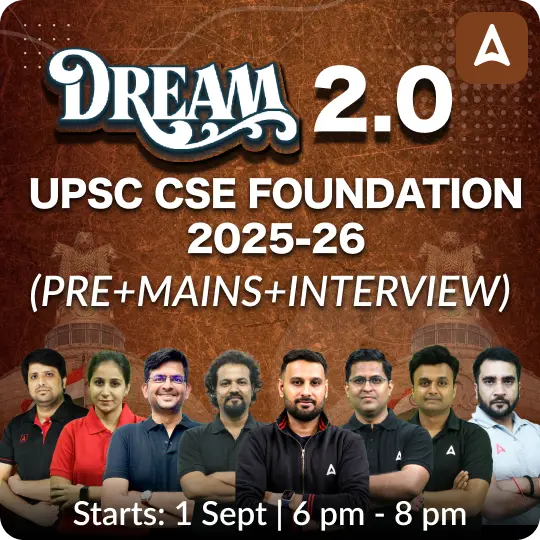Table of Contents
5 trillion-dollar economy: Relevance
- GS 3: Indian Economy and issues relating to planning, mobilization, of resources, growth, development, and employment.
The aspirants have, till now, read a lot of articles that talk about making India a 5 trillion-dollar economy. It is an important topic for UPSC mains and the aspirants need to prepare this topic comprehensively. In this article, we will provide you with enough fodder material that can help you fetch good marks in UPSC mains GS paper 3.
Indian economy in 2022
- Various reports have suggested that the Indian economy is slowly recovering from the COVID-19 debacle. However, the recovery is not enough, and certain steps must be followed to towards achieve the target of a 5 trillion-dollar economy by 2025. Below, we are discussing the suggested measures in the three sectors of the economy—primary, secondary, and, tertiary.
Primary sector
- Indian economy is, predominantly, an agricultural economy. According to the Economic Survey 2020-21, 60% of the people are still engaged in the agriculture sector, but the agricultural GVA hovers around 18%. However, in these trying times of COVID, agriculture is the only silver lining showing a growth of 3.4%.
- Agriculture, broadly, has 3 stages—pre-production, production, and, post-production.

Pre-production
In the pre-production stage, the focus should be on:
- Galvanizing more farmers into FPOs (Farmer Producer Organisations) as 86% of our farmers fall into small and marginal categories;
- Providing affordable and good-quality seeds through schemes like Kharif Strategy 2021;
- Providing irrigation facilities through river interlinking projects and schemes like PMKSY (Pradhan Mantri Krishi Sinchai Yojana);
- Price assurance through schemes like PM-AASHA (Pradhan Mantri Annadata Aay SanraksHan Abhiyan) and MSP and;
- Giving cash-in-hand through schemes like PM-KISAN.
Production
In the production stage, the efforts should be on:
- Minimizing the role of fertilizers through schemes like PKVY (Paramparagat Krishi Vikas Yojana);
- Farm-mechanization through schemes like SMAM (Sub-Mission on Agricultural Mechanization);
- Crop insurance through schemes like PMFBY (Pradhan Mantri Fasal Bima Yojana) and;
- Adopting climate-resilient agricultural practices like precision farming.
Post-production
In the post-production stage, the focus should be on:
- Building storage facilities by accepting the recommendation of the Shanta Kumar committee;
- Improving the forward linkages and backward linkages through schemes like PM-FME and SAMPADA;
- Focussing on agricultural exports through the implementation of the Agricultural Export Policy, 2018.
- Apart from this, the focus should also be on animal husbandry, horticulture and, pisciculture through schemes like the National Livestock Mission, Mission for Integrated Development of Horticulture and, PMMSY (Pradhan Mantri Matsya Sampada Yojana) respectively.
Secondary sectors
- The manufacturing sector in our country is facing issues since the LPG reforms. The grim reality is evident from the PMI index.
- The MSME sector, the largest provider of employment in our country, is suffering from many distresses, which needs an urgent upgrade.
- To help the cash-starved MSME steps like CGTMSE (Credit Guarantee Fund Trust for Micro and Small Enterprises) are in the right direction.
- Moreover, the marketing of local products needs to be strengthened through steps like Marketing Assistance Scheme.
- The revival steps of the manufacturing segment should be based on 4Ms – materials, machine, manpower, and, methods.
- Material: On the material front, India needs to become a manufacturing hub of the world, which would be possible only with sustained government efforts.
- Machine: On the machine’s front, the world is adapting to Industry 4.0, so we too need to take steps to transform our traditional plants into smart factories.
- Manpower: As far as manpower is concerned, a skilled workforce has become a prerequisite in this technology-driven society and, this makes the role of schemes like SANKALP and STRIVE even more important.
- Methods: On the method front, the traditional and archaic processes need to be transformed to enable the standardization of products with reduced cost of production. These steps will increase our investment ratio and simultaneously decrease the ICOR (Incremental Capital-Output Ratio).

Tertiary sector
- The services sectors also need the government’s push. The banking sector needs to be put on track through steps like Prompt Corrective Action and EASE agenda.
- Moreover, our education system needs to focus on converging technical and vocational education and making education relevant to industries.
- The expenditure on health should be increased to 2.5% of GDP as recommended by the National Health Policy to reduce the out-of-pocket expenditure of the people.
- Similarly, India is blessed with a wide variety of tourist spots. So, we need to extract benefits from it, without endangering the environment, through schemes like PRASAD (Pilgrimage Rejuvenation and Spiritual Augmentation Drive) and HRIDAY (National Heritage City Development and Augmentation Yojana).
- Moreover, infrastructure needs an overhauling which is rightly targeted in National Infrastructure Pipeline.
- Start-ups are in dire need of protection and thrust, the schemes like Start-up India, income tax exemptions for angel investors, and, Start-up India Seed Fund Scheme will contribute to maintaining the healthy economy of the country.
Way forward
- These measures given above need to be coupled with steps like providing long-term investment in human capital, skills, and on-the-job training, in basic social protection.
- A holistic approach is needed for the comprehensive growth of our economy.
- The steps given above will go a long way in making the dream of Aatmanirbhar Bharat true.
| Also Read | |||
| The Editorial Analysis: Reaping India’s demographic dividend | Analysis of Yojana Magazine-Infrastructure: History& Challenges | Global Risks Report 2022 | Makar Sankranti, Lohri, and Pongal 2022: Date, History, and Significance |
| Analysis of Sansad TV Discussion: Impact of Election Freebie Politics on the Economy | Wildlife sanctuaries in India | Quarterly Employment Survey | Swami Vivekananda |
| The Editorial Analysis: The Sail that Indian Diplomacy, statecraft Need | 24th National Conference on e-Governance 2021: Hyderabad Declaration Adopted | RBI Sets Up a Fintech Department | Jallikattu- T.N. govt. allows Jallikattu |



 TSPSC Group 1 Question Paper 2024, Downl...
TSPSC Group 1 Question Paper 2024, Downl...
 TSPSC Group 1 Answer key 2024 Out, Downl...
TSPSC Group 1 Answer key 2024 Out, Downl...
 UPSC Prelims 2024 Question Paper, Downlo...
UPSC Prelims 2024 Question Paper, Downlo...







